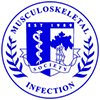Authors: Antoci Jr, Valentin*; Adams, Christopher S.; Parvizi, Javad; King, Samuel B.; Wickstrom, Eric; Zeiger, Allen R.; Composto, Russell J; Ducheyne, Paul; Shapiro, Iriving M; Hickok, Noreen J
Title: Covalently Attached Vancomycin Provides a Nanoscale Antibacterial Surface
Addresses: 1015 Walnut St. 501, Philadelphia, PA 19107
Purpose: We have hypothesized that antibiotics (a) can be covalently attached to the implant surface using stable chemical bonds, (b) will retain their activity against microorganisms, (c) will be stable over time, and (d) will have minimum host cell toxicity.
Methods: 1mm diameter Ti90Al6V4 (Ti, Goodfellow) rods were passivated, silanized with APTS, reacted twice with AEEA, and covalently linked with Vancomycin. VAN immunofluorescence. Control and VAN-modified Ti rods (TiVAN) were incubated with mouse anti-VAN IgG (1:300, US Biologicals), 4°C, 12h, followed by AlexaFluor 488-coupled donkey anti-mouse IgG (1:300, Molecular Probes), 1 h. Short term stability. TiVAN was incubated in Luria-Bertani broth containing S. aureus (Ci ~104 cfu) for 6 days, air dried, washed extensively with PBS, vortexed, washed with 1% (v/v) Triton X-100 in dH2O, 70% ethanol in dH2O, and stained for VAN. Antibiotic Activity. Control Ti and TiVAN were sterilized by incubation in 70% ethanol for 15 min, rinsed 3X with PBS, and incubated with S. aureus (Ci=104 cfu) in LB, 37°C, 24 h. Cell toxicity. MC3T3-E1 preosteoblast-like cells were cultured in Dulbeco's Modified Eagles Medium with 10% FBS and passaged into 24 well plates. Ti or TiVAN rods were placed in the wells and incubated for 3 days to assess cell adhesion and proliferation on the surface. Cells were labeled with CellTracker Green (Molecular Probes) for 5 min prior to visualization by fluorescence.
Results: Ninhydrin assays to determine aminosilanization and Fmoc quantifications to determine AEEA addition yielded 1.27(±0.21)x10-16 mol/îm2 and 1.37(±0.33)x10-16 mol/îm2 respectively, predicting >95% efficiency for each synthesis step. Stained by immunohistochemistry for vancomycin, The TiVAN rod shows intense, diffuse staining with areas of focal differences perhaps due to local heterogeneity of the Ti rod; the control Ti surfaces exhibit no specific fluorescent signals. We next tested if VAN retained its activity after chemical bonding to the rod. After 24h of exposure to high doses of S. aureus, the TiVAN shows background fluorescence over the surface, suggesting that bacterial adhesion/proliferation is minimal. In contrast, the control Ti rods show intense fluorescence with S. aureus slime apparent. To test the effects of the surface modification on osteoblast-like cell adhesion, MC3T3-E1 cells were cultured in the presence of Ti and TiVAN rods and cellular adhesion visualized by CytoTracker Green staining. Both rods showed extensive colonization by the osteblast-like cells in vitro, suggesting that the TiVAN surface was not adversely affecting osteoblastic viability.
Discussion: We have described a novel surface modification on Ti implants that renders them bactericidal. The covalent chemical bonding confers stability to the antibiotic in time, potentially allowing coverage for multiple assaults by infectious organisms. Thus, our proposed modification in surface design serves as a starting point for the development of a new generation of implants that target biological activities to sites of physiological importance.

